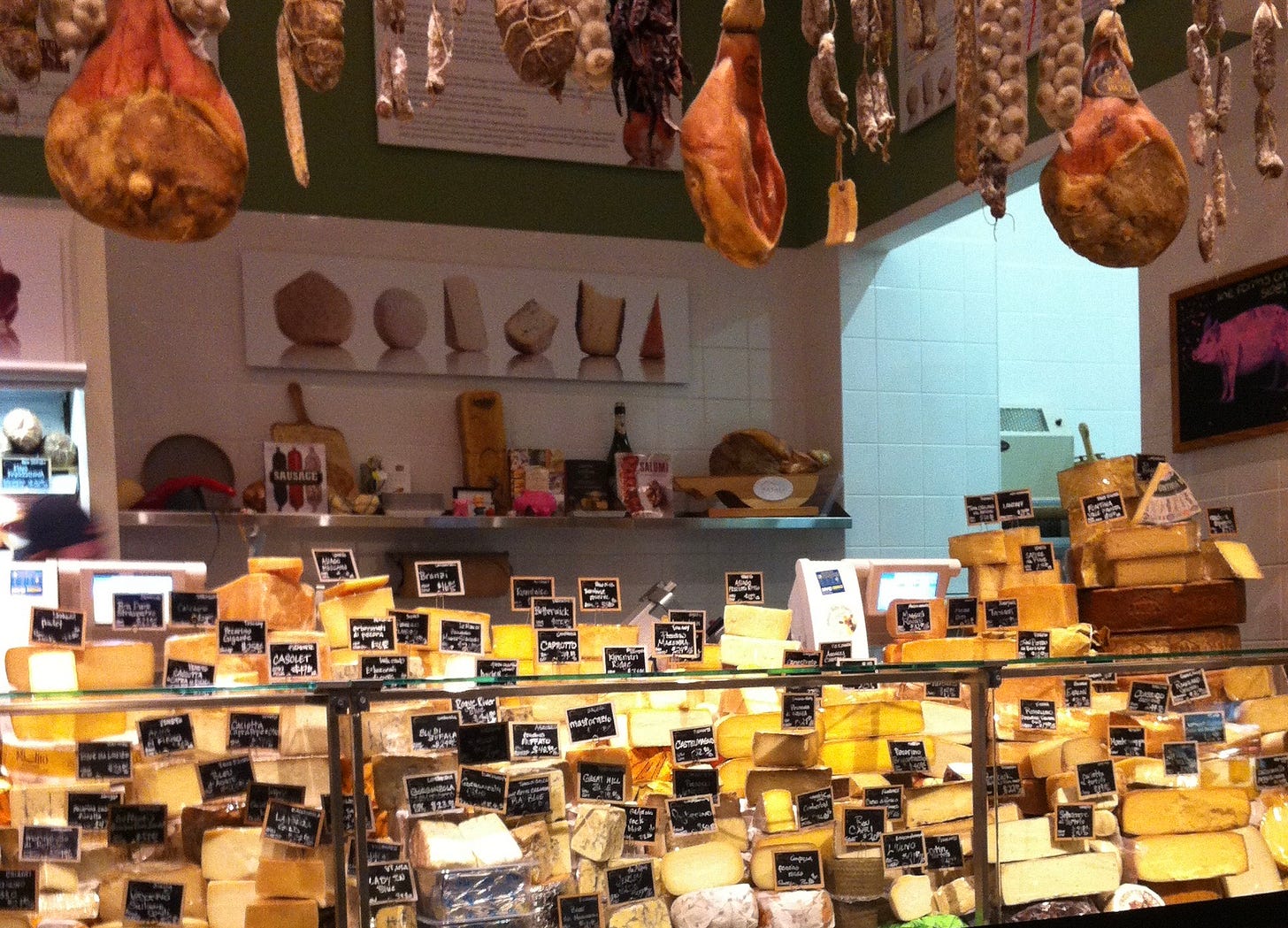About the Cheese Anthology
Cheese Anthology Index
How to Buy, Store, and Eat Cheese
affineur A professional cheese ager, or ripener.
alpage High mountain pastures.
appellation A legally controlled name for a particular food or drink, modeled on the Appellation d’Origine Contrôlée, or AOC, system of France, which has been largely absorbed into the European Union’s system of Protected Designations of Origin (PDOs). You’re more likely to see the producer’s own language: Appellation d’Origine Protégée (AOP) in French, Denominazione di Origine Protetta (DOP) in Italian, Denominación de Origen Protegida (DOP) in Spanish, etc. Other lesser EU and national categories have limited importance for cheese. An appellation is nearly always a place-name; the rules for it define that food or drink, helping to protect customers and increasing the value of the name to producers. Some rules are permissive, but with cheese the tendency is to tighten, so as to set each cheese more clearly apart from its industrial competition. In addition to government-controlled cheese appellations, Slow Food has established more than 100 presidia for dairy products, and their standards can be rigorous.
bloomy-rind The category of soft cheese, including Camembert, Crottin de Chavignol, and Sainte-Maure, ripened largely by organisms that require oxygen and grow on the surface.
cooked-curd The category of cheese whose curd is heated beyond curdling temperature (usually about the animal’s body temperature). The curd for Gruyère, for instance, is cut to grain-size pieces and heated to between 54 and 59 degrees C (129 and 138 degrees F), which shrinks and dries the pieces and selects more heat-tolerant organisms, with corresponding effects on flavor. Other well-known cooked-curd cheeses are Emmentaler, Comté, and Parmigiano-Reggiano.
culture The microorganisms — bacteria, fungi, yeasts — that initially acidify the milk for cheesemaking or later act as ripening agents. All cheesemakers once relied solely on the organisms naturally present in the milk and dairy environment, sometimes ensuring they were plentiful by adding them in the form of whey from previous cheesemaking. These useful organisms generally came to dominate unwanted or potentially dangerous ones. But today equipment and surroundings are so clean that there may not be enough of the needed wild creatures. For that reason and for greater control, the wild cultures are usually supplemented by or, if the milk has been pasteurized, entirely replaced by commercial ones.
curd Milk that has been turned into a gel by the action of rennet, acidity, or a combination of the two.
farm-made Also called farm, farmhouse, farmstead, fermier and related words in French, applied to cheeses made on a farm with that farm’s own milk. The implication is small scale, hand work, and very fresh milk, which generally in the Old World is used raw. A farm-made cheese has the potential to offer a clear taste of a specific terroir.
heat-treated In reference to milk, subjected to enough heat, such as 65 degrees C (149 degrees F) for 15 seconds, to eliminate some pathogens and, inadvertently, also beneficent organisms, but not as much heat as is required for pasteurization. Heat-treatment is less harmful to taste than pasteurization.
microflora An umbrella word for all the many microorganisms (not strictly flora) that play a role in making and ripening cheese.
mold 1. The perforated container in which curds are placed to drain their whey or to be pressed, in either case giving the cheese its shape. 2. Species of fungus that grow on the surface of a cheese, or inside a blue cheese, and ripen it.
pasta filata Also called stretched curd or pulled curd, and literally in Italian meaning “spun curd,” referring to curd that has been acidified, heated, and stretched to make mozzarella, caciocavallo, provolone, and other cheeses.
pasteurized In reference to milk, subjected to enough heat, such as 75 degrees C (167 degrees F) for 15 seconds, to reduce pathogens to a level that poses no threat to health. The heat, however, limits the development of flavor and, in less-aged cheese, produces less delicate texture.
pressed The category of cheese whose curd in its mold has been subjected to high pressure to squeeze out moisture and form a compact body with few holes or none. (During aging, though, in a cheese such as Emmentaler certain bacteria inflate tiny openings and form “eyes.”)
rennet Narrowly, the enzymes from the stomach of a calf, kid, lamb, etc. that cause milk to gel — to form curd. Broadly, also the coagulants found in thistles and other plants as well as the microbial rennet produced from certain molds and often referred to as “vegetarian.”
washed-rind Also called smear-ripened, the category of surface-ripened soft to semisoft cheese, including Époisses, Munster, and Taleggio, generally with an orangy rind and a barnyard smell, produced by periodically rubbing or softly brushing the surface of a cheese with liquid, usually water or brine. Some pressed cheeses, including Gruyère, are also washed to varying degrees.
whey The clear liquid that flows from curd, especially after it has been broken. Whey is somewhat different from buttermilk, which separates from cream during butter making. Whey is the only ingredient of ricotta in what might be called its pure form. Concentrated by boiling, whey also makes the Norwegian cheeses collectively called brunost. ●





